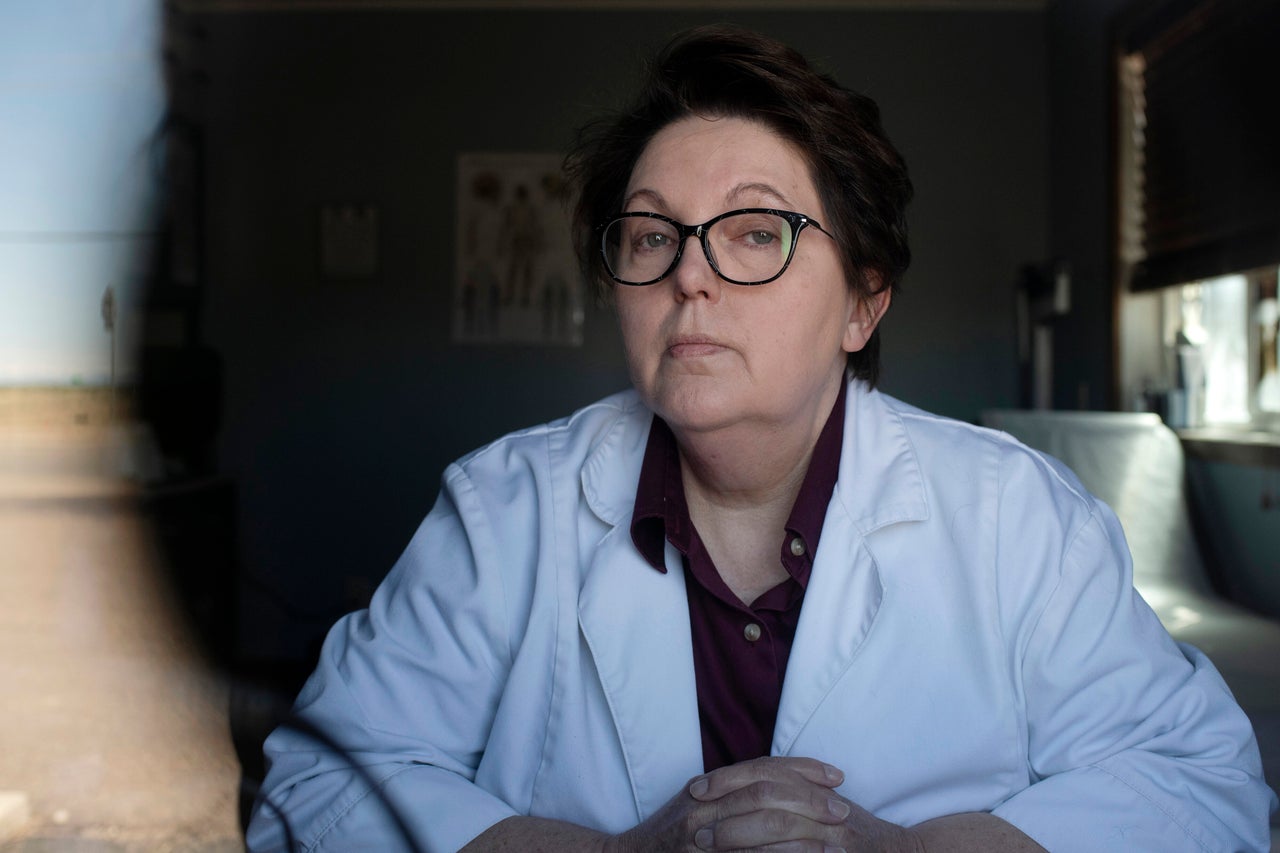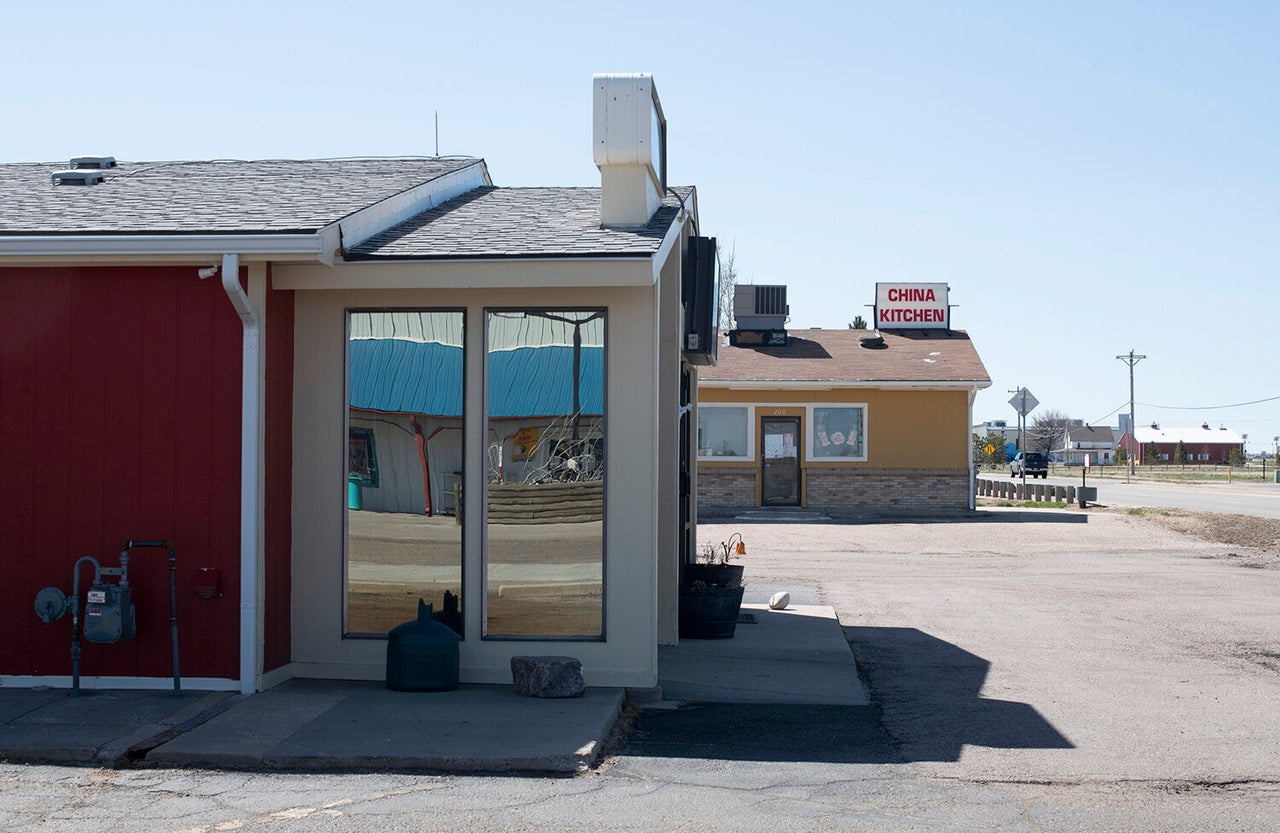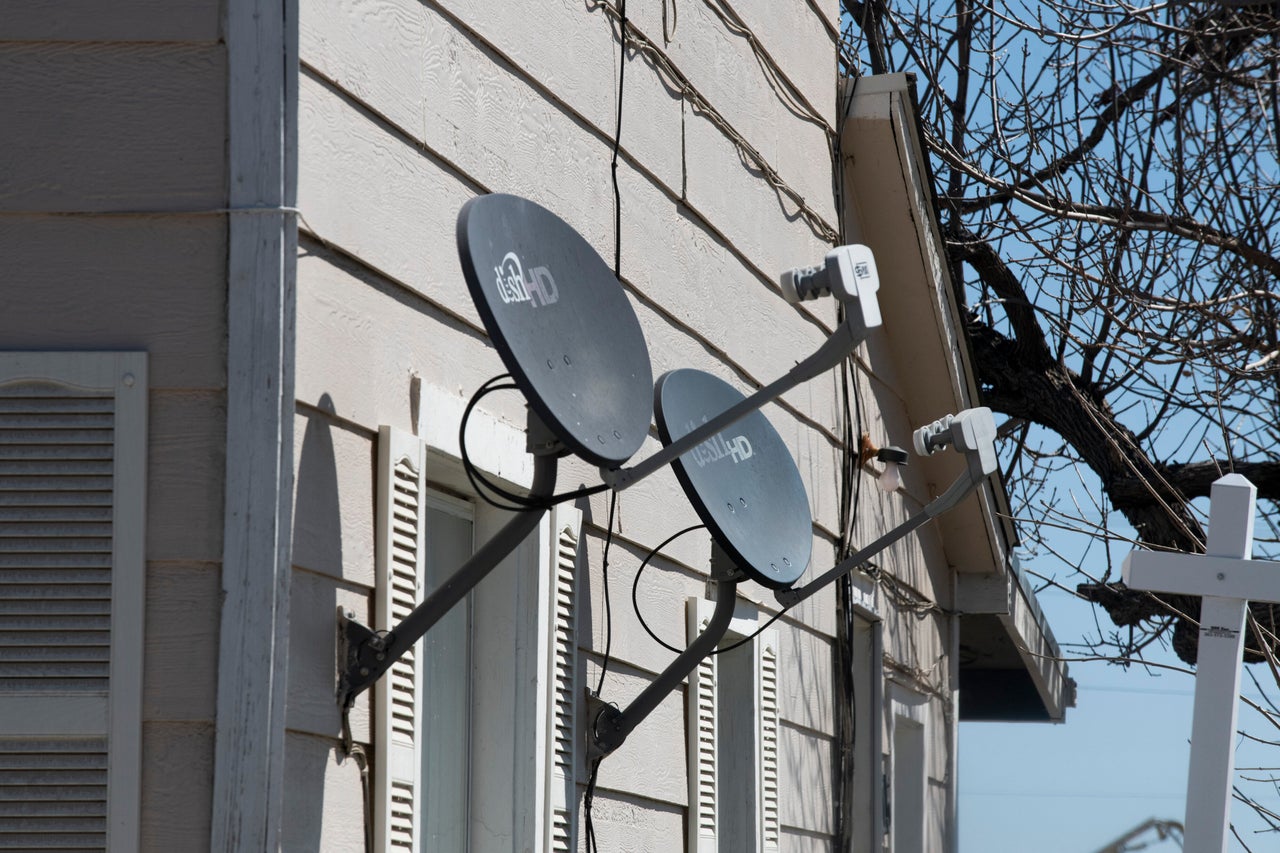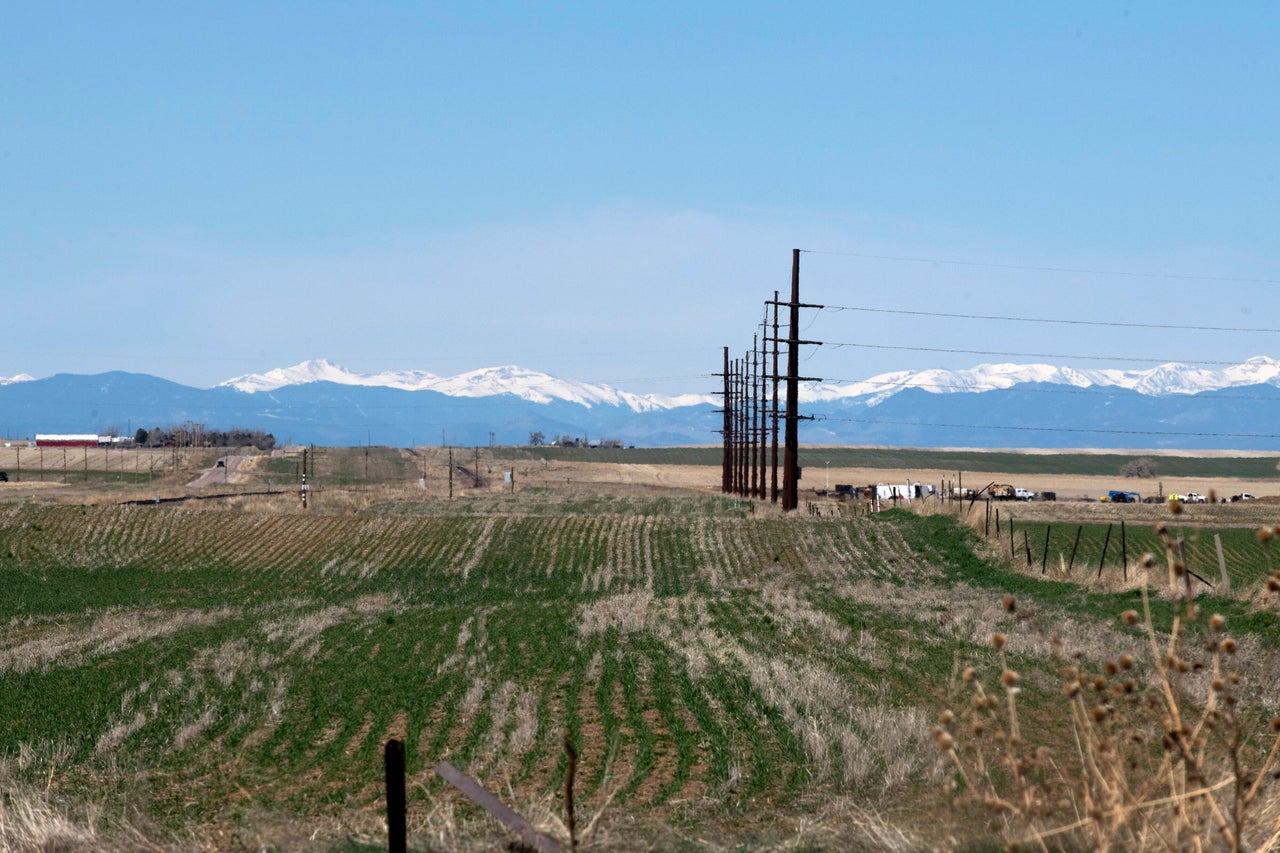Photography by Rachel Woolf
Tracy Scott opened her family medicine clinic, Next Door Health Care, in Bennett, Colorado, in November. The nurse practitioner has short dark hair and speaks with a tinge of Oklahoma. She shares a red double-wide with a chiropractor and behavioral therapist in a lot beside a Chinese restaurant. But lately she’s been alone in the building, because hers is the only service deemed critical.
With cases of COVID-19 rising in Colorado, Gov. Jared Polis issued a stay-at-home order on March 25, and quiet Bennett became downright silent.
The town of just 2,500 residents sits 40 miles due east of Denver amid open horizons, farmland and grass. In the past week, Scott has only seen her neighbors in line at the King Soopers grocery store, and fear of the virus has kept even her regular patients from making their appointments.
“I am worried about them, especially the older people,” she said. “I have one patient who lives alone. He’s about 70. I told him to keep a phone by him.”

Scott’s clinic had seemed uniquely positioned to handle this crisis. Since January, she has offered telemedicine appointments — remote consultations usually conducted over a video app similar to Skype.
As COVID-19 spreads, telemedicine has emerged as an invaluable tool, allowing doctors to see patients while adhering to social distancing guidelines and keeping as many people as possible away from hospitals. The trouble is that Bennett is like so many small American towns: Out here, well beyond Denver’s bright lights and cable wires, patients can’t connect.
“The broadband problem is terrible. Where I live it’s only satellite, and everybody in my neighborhood has problems,” said Scott, who also coordinates an online nursing program for Walden University. “If the internet was better I definitely would have more patients doing telemed.” Instead, in Bennett and other rural communities across the country, price and limited broadband infrastructure keep a medical lifeline out of reach for some 12 million people during the pandemic.
“The broadband problem is terrible. Where I live it’s only satellite, and everybody in my neighborhood has problems. If the internet was better I definitely would have more patients doing telemed.”
- Tracy Scott
Up until a couple weeks ago, telehealth technology use was most common among behavioral therapists who don’t need to touch their patients. Now, as health officials have urged people to stay home, doctors in other fields are embracing the technology.
“In this crisis, it’s actually a good thing for people to be distanced from their doctors,” said Mei Kwong, executive director of the Center for Connected Health Policy, which advocates for telehealth services.
In cities and well connected towns, physical therapists, family practitioners and even surgeons can monitor, diagnose and in some cases prescribe medication over a smartphone or tablet without the risk of spreading the novel coronavirus within a hospital. Doctors can maintain checkups and appointments with patients who have no symptoms, but are sheltering at home. And by deferring many in-person visits, remote medicine eases the burden on overworked, undersupplied hospitals and clinics.

Suddenly, urban hospitals, nursing care centers and small-town clinics are interested in starting telemedicine in their practices.
“We are swamped,” said Janine Gracy, of the Heartland Telehealth Resource Center in Oklahoma. “All telehealth resource centers across the country are being inundated with questions. If someone has even thought about telehealth in their organization, they want to implement it today.”
The coronavirus has not hit rural counties as hard as cities like New York and Seattle, but demographics have rural doctors on edge. Nationally, rural communities are home to a higher proportion of medically vulnerable elderly and disabled residents, as well as low-income service workers who lack paid time off, the Centers for Disease Control and Prevention reports. And rural residents are more likely to die from preventable ailments, particularly respiratory infections.
The discrepancy in health care outcomes is largely linked to shortcomings in funding and access. Since 2005, 170 rural hospitals have closed, according to the Sheps Center for Health Services Research. Their exit has left rural counties badly in need of primary care physicians and put many residents more than 100 miles from a specialist. (There is only one other medical clinic within 20 miles of Bennett, and it is not open on weekends.)
Telehealth could help bridge that gap, but as a recent study from the University of Pittsburgh shows, in places with inadequate access to physicians, the proportion of people with internet capable of handling a video consultation is less than 40%.
“More than 26% of rural Americans lack access to broadband internet, compared to less than 2% of urban residents.”
Streaming video and audio well enough for a doctor to make a diagnosis requires a broadband internet connection, which the Federal Communications Commission defines as internet download speeds of at least 25 megabits per second and upload speeds of at least 3 Mbps. More than 26% of rural Americans lack access to it, compared to less than 2% of urban residents.
“It’s a business case,” said Colleen Jamison, manager of the State Independent Telephone Association of Kansas. Laying a mile of fiber optic cable can run anywhere from $25,000 to upwards of $60,000. “When you have a customer density of maybe 1.5 to 2 people per square mile, it’s going to take such a long time to recover that investment.”
Even where there is broadband coverage, price can make it unattainable for individual households in rural communities, where the average poverty rate is 4 percentage points higher than in urban areas.
In Bennett, satellite internet coverage is noticeably better in town, where Scott runs her clinic, but thins out as it reaches across miles of farmland to where many of her patients live.
For her dish internet service, Scott paid $250 in February. “If you’re on Medicaid already, you can’t afford $250 a month,” she said.

As a result, people outside Bennett often rely on cell service to connect to the internet, but that can be spotty. Scott uses Verizon for her business phone in town, but another phone covered by T-Mobile at home, 13 miles down a dirt road. “With AT&T, forget it, I can’t get on.” She just bought a cell-signal booster that she hopes will help her take more online appointments from her home.
Patients like Sharon Huck, a former hospital billing specialist who lives east of Bennett, have had better luck connecting over their cellphones. Sixty-four years old, with a sore throat and stuffy head, Huck set up an internet consultation with Scott to avoid coming into town, but couldn’t stream the needed video over the computer. “It had one bar, then four, then back to one,” she said of her wireless internet signal during the call. Shutting her laptop, she tried again from her cellphone and was able to get a prescription for antibiotics. “I’m thinking telemed would work perfect for someone who is not so far out,” she said.
Sixty miles southeast across the plains from Bennett, the Limon Family Practice Clinic is trying to bridge the connectivity gap. “People are scared and are not coming in for anything,” said nurse Shelly Cochran.
The clinic offers telemedicine, but so many struggle with access that nurses have resorted to driving to patients’ homes towing a cell signal or Wi-Fi hot spot to boost their connections. That allows the patients to meet virtually with doctors back at the office. It’s a quick fix for patients who need attention during the crisis, but far from a permanent solution.
Since the outbreak started, some cable companies, like Comcast, have offered free broadband to low-income families who can connect to it and have increased the speed of basic packages. The FCC has granted wireless providers temporary access to an underused band of the broadcast spectrum to bring more bandwidth to people in some of the country’s least populated areas across 29 states. And the federal stimulus package allotted $100 million to build out broadband access in rural communities, though it will take some time to construct the infrastructure.

To help patients afford telemedicine services, the health care industry — including private insurers, Medicaid and Medicare — has in the past few weeks relaxed rules and made reimbursements for telehealth services more closely mirror those for in-person visits.
So far for Scott, patients booking remote appointments tend to be younger. They call in with colds or to refill their inhaler prescriptions. They point the camera down their open mouths and stick out their tongues so she can inspect their throats for signs of strep. Sometimes, they want to know whether they should make the trip to the emergency room. Lately, they’ve questioned whether their symptoms were severe enough to warrant using one of Scott’s last remaining coronavirus tests.
As the COVID-19 threat has intensified, several young patients who care for elderly parents have avoided the clinic altogether, and telehealth has been a godsend — when it works. Just last week, while on a video consultation to refill a prescription for a woman in her 40s who looks after her 82-year-old mother, the connection failed. “It’s very frustrating. It just froze up in the middle of the appointment,” Scott recalled. They battled to get it back, but ultimately gave up. “Now she’s going to have to come in and see me in person.”
CORRECTION: An earlier version of this story said there were 12 million people in rural communities across the country; there are 12 million people without broadband access in rural communities across the country.
For more content and to be part of the “This New World” community, follow our Facebook page.
HuffPost’s “This New World” series is funded by Partners for a New Economy and the Kendeda Fund. All content is editorially independent, with no influence or input from the foundations. If you have an idea or tip for the editorial series, send an email to thisnewworld@huffpost.com.
- Stay up to date with our live blog as we cover the COVID-19 pandemic
- How long are asymptomatic carriers contagious?
- What to do if you can’t pay rent right now
- How to switch off from work when home is your office
- Why we should forgive student loans for doctors on the front lines
- How to make a face mask with just a bandana
- How long does coronavirus live in the air?
- The HuffPost guide to working from home
- What coronavirus questions are on your mind right now? We want to help you find answers.
- Everyone deserves accurate information about COVID-19. Support journalism without a paywall — and keep it free for everyone — by becoming a HuffPost member today.